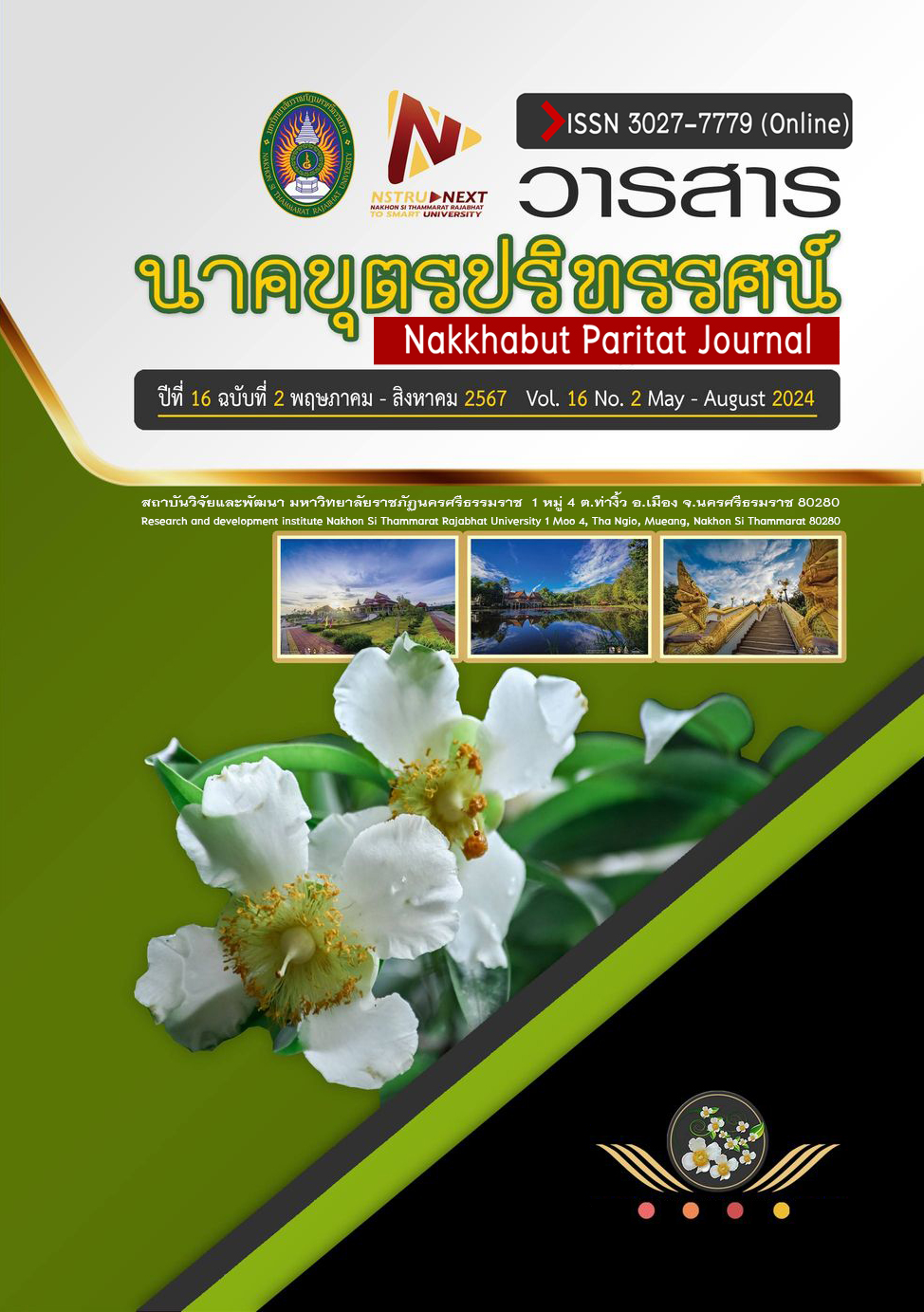The function of folklore on Khanom La in Nakhon Si Thammarat
Main Article Content
Abstract
The research employed a qualitative method and aimed to analyze the role of Khanom La in Nakhon Si Thammarat province according to folklore concepts. The important Informants divided into six groups included knowledgeable people with expertise and experience in manufacturing who can transform knowledge and promote the making of local Khanom La including sage villagers, local artists, senior scholars, community leaders, representatives of local government organizations, the heads of the district cultural council, and representatives from relevant agencies. Data were collected from secondary and primary sources or field studies with interviews, observation, and focus group discussions. Content analysis and descriptive summary were employed.
The research showed that the folkloristic function of folklore on Khanom La in Nakhon Si Thammarat was as follows: 1) explain the background and reasons for the rites, focusing on the importance of Khanom La, a dessert in making merit during the festival of the tenth lunar month, 2) educate society through oral tradition, focusing on telling that Khanom La is the local wisdom created and passed on from the ancestors, 3) maintain a behavioral standard of society as a social plan because unique characteristics of Khanom La can be compared as the bonding of family, and 4) entertain and be a solution for people’s frustrations in society because the making of Khanom La is the reflection of the local wisdom, including the application and adaptation to social and cultural changes.
Article Details

This work is licensed under a Creative Commons Attribution-NonCommercial-NoDerivatives 4.0 International License.
References
Bascom, W. (1965). Four Function of Folklore In Alan Dundes (ed.), The Study of Folklore. New Jersey: Prentice-Hall.
Boonpayon, A. (2015). Performing a Ceremony for Chanting Parents' Loving Kindness: Knowledge Transfer of Folkloristics through Ritual of Community Way in Bang Ban District, Phra Nakhon Si Ayutthaya Province. (Doctor of Philosophy Thesis). Burapha University. (in Thai)
Changkhwanyuen, P. (2017). Cultural Concept. Bangkok: Chulalongkorn University Printing House. (in Thai)
Choibamroong T. (2011). Wisdom for Creative Local Development. Bangkok: King Prajadhipok's Institute. (in Thai)
Chuaykaew, B. (2020). Interview, 14 July 2020. (in Thai)
Chayarattanarak, N. (2021). Interview, 17 July 2021. (in Thai)
Eameak, S. (2021). Interview, 23 January 2021. (in Thai)
Homfung, C., and Ruamsuk, S. (2016). Folklore Teaching with development 21st century skills of learner and Enhancement pride in Thai wisdom. Academic Journal Veridian E-journal Silpakorn University, 9(2), 1549-1562. (in Thai)
Kaewnoen, P. (2021). Interview, 22 July 2021. (in Thai)
Meebao, S. (2018). The Festival of the Tenth Lunar Month (Sat Duan Sip) in Nakhon Si Thammarat. Narkbhutparitat Journal Nakhon Si Thammarat Rajabhat University, 9(2), 220-229. (in Thai).
Na Thalang S. (2016). Looking through Folkloristics to See Ethnic Identity. Bangkok: Princess Maha Chakri Sirindhorn Anthropology Centre (Public Organization). (in Thai)
Na Thalang, S. (2020). Theory of Folkloristics: Methodology in Analyzing Legend and Folk Tale. Bangkok: Chulalongkorn University Press. (in Thai)
Naksing, K. (2020). Interview, 15 July 2020. (in Thai)
Pidchid, S. (2020). Interview, 17 July 2020. (in Thai)
Sengraksa, P. (2021). Interview, 21 July 2021. (in Thai)
Sudthamusik, B. (2021). Interview, 4 August 2021. (in Thai)
Srisomphot, S. (2021). Interview, 18 July 2021. (in Thai)
Thawornseth, A. (2003). Folkloristics. Bangkok: Suan Sunandha Rajabhat University. (in Thai)
Thasniyom, P. (2021). Interview, 20 July 2021. (in Thai)
Thammachat, S. (2021). Interview, 4 August 2021. (in Thai)
Wetcho, P. (2018). Folkloristics. Bangkok: Sahamit Pattana Printing (1992). (in Thai)


